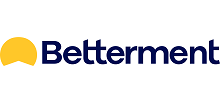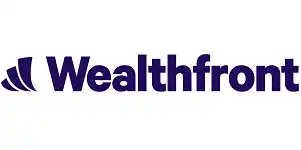Robo-advisor Wealthfront lets investors start passively investing with as little as $500 with a focus on minimizing trading and maximizing long-term gains. Refreshingly low fees make Wealthfront useful for simple needs, like growing savings or planning for retirement, and their tax reduction strategies offer an impressive tool for investors with large accounts.
Our editorial team has been researching and publishing reviews and comparisons on the top personal finance products that you should know about with expertise since 2006. When evaluating popular robo-advisors, we examine ease of use for beginning investors, available investment tools, account minimums, weigh whether applicable fees are fair, and more.
Wealthfront is designed for young professionals, anyone from passive investors who want expert digital guidance, to people who want to be smarter with money.
With low fees and multiple tax perks, automated investment management tuned in to your individual risk level make Wealthfront worth a look.
- Passive investing with automated management
- Tax-loss harvesting
- Ability to customize portfolios
- No fractional shares of ETFs in automated accounts
- No human advisors
What is Wealthfront?
Wealthfront is designed for young professionals, anyone from passive investors who want expert digital guidance, to people who want to be smarter with money. Investment management is automated but strategic—and tuned in to your individual risk level.
Founders Andy Rachleff and Dan Carroll wanted everyday people to get the benefits of top-tier financial advice usually reserved for the wealthy.
The Wealthfront staff has plenty of expertise to go around. Chief Investment Officer, Dr. Burton G. Malkiel, wrote A Random Walk Down Wall Street, the financial guide that made passive investing popular.
Pros & cons
Pros
- College planning — College savings should be integrated into long-term financial plans, but they can be easy to forget if college is years away. Wealthfront’s built-in tools help you stay on task.
- Tax-loss harvesting — Wealthfront makes sure fees and taxes don’t eat too much into your profits.
- Automated management — Outsource your portfolio to expert algorithms designed to maximize gains.
- Ability to customize portfolios — Wealthfront allows you to choose from hundreds of ETFs, so you’ll get the portfolio you really want.
Cons
- No fractional shares — Wealthfront doesn’t buy fractional or partial shares of ETFs, which means you may have some non-invested cash sitting around for a while.
How does Wealthfront work?
When you sign up for Wealthfront you enter some basic info, including your pre-tax income and savings. Then you choose your investment goal — a high-interest Cash Account, long-term investing, retirement, or college savings. Start with one goal and add others later.
If you’re just looking for advice, Wealthfront has you covered. I found this feature thoughtful; the site walks you through how to save for life milestones.
If you’re ready to get set up as an investor, Wealthfront asks a few questions to determine your comfort level with risk. They’ll use this information for your personalized investment portfolio.

Wealthfront may ask, for instance, what you’d prefer to do in a market downturn if your portfolio lost 10% of its value in a month.
From there Wealthfront measures your risk tolerance on a scale of one to 10. I got a score of three, which makes sense since I’m a risk-averse person where investment is concerned. The site does allow you to change your answers if you’re not confident in the result.
As with most robo-advisors, you’ll link any financial info (such as a checking account) and assets you want to be connected to your investment plan. Since TurboTax partners with Wealthfront, TurboTax users can transfer info quickly.
How does Wealthfront manage your portfolio?
Wealthfront’s algorithms really know how to diversify, which is super helpful if you’re an investing novice. They’ll typically divide a portfolio between six to eight asset classes, including U.S. and foreign stocks, dividend stocks, real estate, government, and corporate bonds, and inflation-protected securities. Wealthfront primarily uses low-cost exchange-traded funds (ETFs). Investors can also opt for a stock portfolio.
Once Wealthfront learns how much risk you can handle and customizes your portfolio, the asset allocations remain the same no matter how much money is in your account. Their software readjusts as needed through a technique called threshold-based rebalancing; once an asset crosses a predetermined “threshold” Wealthfront re-allocates your investments. They’ll also move assets around when the market fluctuates, dividends get reinvested, or money is deposited or withdrawn. You can change your risk score, though it takes time for Wealthfront to switch your assets accordingly.
Their goal is to minimize taxes. Though you may not see short-term capital gains, you’ll get your money’s worth come tax time from Wealthfront’s daily tax-loss harvesting — a service available to all investors.
How much does Wealthfront cost?
Several Wealthfront options, including financial planning and advice, come with no fees. The Cash Account, Wealthfront’s high-interest checking account, also has zero account fees. If you want Wealthfront to manage your investments you’ll pay a reasonable, competitive annual fee of 0.25% – that’s a quarter of what a financial advisor charges over a robo-advisor.
| Service | Cost |
|---|---|
| Cash account | Free |
| Account transfers and closing | Free |
| Automatic rebalancing | Free |
| Path financial planning tool | Free |
| Cash account minimum | $1 |
| Investment account minimum | $500 |
| Investment account withdrawal minimum | $250 |
| Account management for all investors | 0.25% of total assets |
| Wealthfront Risk Parity Fund (WFRPX) fee (accounts $100,000+ that opt in) | 0.25% of total assets |
| Annual fee for exchange-traded funds (ETFs) | 0.07%—0.16% of total assets |
Optional services Wealthfront offers may charge slightly higher fees.
Features of Wealthfront
Sign-up offer
» Right now, when you sign up using our dedicated Wealthfront link, you can get a $50 investing bonus
The $50 promo only applies to new users (meaning you don’t have an existing Wealthfront Investment or Cash account) who use use our link above or below and click ‘Get Started.’ Then, fund your first taxable Automated Investing Account with at least $500 within 30 days. There’s a verification process to verify you identity and you do have to maintain these funds for a period (at least 7 days), but it’s all pretty standard and a relatively easy way to get a bonus. That $50 will come over to your account within 30 days following that. Additional promotional terms apply.
Path investment management
Path, Wealthfront’s (totally free!) financial planning service, shows where your finances stand and carve a “path” towards the future with a focus on retirement. You don’t need an investment account to use Path, though you will need to share your financial info.
Data analysis is one of Wealthfront’s specialties, and your account data is combined with third party algorithms to predict possible future outcomes. How much should you add to your savings account? When should you retire, and can you maintain your current lifestyle in retirement? What will your net worth be in ten years? How long can you afford to take a sabbatical? Are you on track to buy a house or pay for college? Path helps you plan ahead for multiple contingencies. And if a goal seems unreachable, Path will look at your finances and see how you can get there.
Essentially Path is a free personal financial advisor without the “person” aspect. Available on mobile or desktop, it makes Wealthfront one of the only advisors in the robo-advisor world to offer free financial planning. Even if you don’t keep your primary account at Wealthfront, Path is worth a look. If you do use Wealthfront’s other services, Path data is integrated across the board.
Cash account
Robo-advisors have been offering bank-style services for a while. Wealthfront joins the trend with their high-interest checking account. The account is one of the best high-interest checking accounts for people who want to earn interest on all of their money and get paid up to two days early. And you’ll earn quite a bit of interest; the account has an impressive 5.00% APY. You can opt for an individual account, a joint account, or a trust. Individual Wealthfront Cash accounts are FDIC insured up to $8 million (and up to $16 million for joint accounts).
Wealthfront recently added a new feature to their Cash Accounts in February 2021. In the past, it took some time to transfer money from a Wealthfront Cash Account to a Wealthfront investment account and actually invest it. In an effort to make your money work harder for you, Wealthfront has now made it possible to move the money from your Wealthfront Cash Account to your Wealthfront investment account and invest it in just minutes. This gives your money more time in the market, which gives it more time to grow.
The account carries no fees and doesn’t charge for transfers. You can open a Cash Account with $1, making it one of Wealthfront’s more affordable offerings. If you’re paying for an investment account as well the fee won’t apply to money in your Cash Account. Read our dedicated full Wealthfront Cash Account review if you would like to learn more.
Homebuyers’ planning
Whether you’re actively on the market or thinking far into the future, Wealthfront has advice tailored to your home-buying affordability and situation. Path’s home-planning section figures out what you can afford and lets you adjust your time frame. You can even go virtual house-hunting right on Wealthfront.
The app partners with real estate heavyweight Redfin. Because of this, shoppers can check home values across the country in real time. If and when I decide to purchase a home I’ll need a service like this!
Travel planning
The Time Off for Travel feature helps you budget in advance for vacations or extended leaves. This tool can be invaluable for anyone planning a major absence from work—parental leave, for instance—or checking countries off their explorer bucket list.
Tailored transfers
This is an almost-unheard-of perk for small-time investors, and Wealthfront’s one of the only robo-advisors to offer it. Account-holders moving their investments from another brokerage account can transfer their investments over time into a diversified portfolio, rather than selling all their holdings at once.
Retirement savings
Not surprisingly, Wealthfront advocates its investors save for retirement. You can open traditional, SEP, and Roth IRAs; they’ll also accept IRA or 401(k) rollovers. Even if you keep your retirement funds elsewhere, Path will analyze your spending and savings — and other relevant data, including projected inflation and Social Security — to make sure you’ve got enough cash when the time comes.
Crypto investing options
Wealthfront is the first robo-advisor to offer crypto investing! To be exact, you can invest in the following two cryptocurrency trusts:
- Grayscale Bitcoin Trust (GBTC).
- Grayscale Ethereum Trust (ETHE).
You can opt to have a combined allocation of up to 10% of your total portfolio with these trusts, making it possible to keep your assets diversified.
College planning tool
Don’t skip this feature if you’re building a child’s college fund (start when the kid’s a baby!) or saving up for school yourself.
Just like with retirement planning, Wealthfront’s College Planning tool balances your savings goals with the cost of college and adjusts for inflation. It also accounts for how much financial aid you can expect.
529 college savings plan
It’s unusual for a robo-advisor to offer this tax-free college savings investment. Wealthfront’s 529 plan comes with all-in fees of no more than 0.46%.
Though the fee is high for a Wealthfront feature, it’s low compared to the cost of 529s elsewhere. And Wealthfront handles the account management and recommends a savings goal. Residents of Nevada, where Wealthfront’s 529 plan is located, the advisory fee is only charged on amounts above $25,000.
One caveat about the 529 plan — you may save money getting a state-sponsored 529 if your state offers one. Many states give tax deductions or credits if you contribute to a state plan, so see if that’s an option first. (Unless you’re in Nevada, in which case Wealthfront’s 529 is a steal.)
Portfolio line of credit
Once your investment account hits $25,000 you’re eligible for a portfolio line of credit. You can borrow up to 30% of your account’s value. If you have a Wealthfront account you’re eligible; you don’t need the hassle of a further credit check, and your credit score won’t be impacted. Interest rates fluctuate based on market value, so be sure to check what they’re at currently if that’s of interest.
Though you can often pay the loan back on your own time, there’s a margin risk — you may have to repay more quickly if your investment value drops.
Tax-loss harvesting
The tax-loss harvesting technique is something only the savviest of us should try at home — it’s one task I’m happy to give to a robo-advisor. Tax-loss harvesting sells any assets that drop in value. The sales lower investors’ overall tax bills, since tax equations balance gains with losses. In the long term, you’ll maximize your gains.
Other tax minimization strategies
If you’re transferring assets as a new client Wealthfront makes sure the new assets are compatible with your portfolio. It holds onto securities with short-term capital gains until the gains become long-term.
Capital gains taxes can be a big headache for investors. Wealthfront lowers them by rebalancing your portfolio consistently to minimize sales, offering the option of index funds with lower turnover, and optimizing the after-tax potential of both taxable and retirement accounts.
Stock level tax-loss harvesting
Available to investors with $100,000 or more in a taxable account, stock level tax-loss harvesting — also known as US Direct Indexing — takes regular tax-loss harvesting to the next level. Wealthfront creates a tailored index fund for you by purchasing individual stocks and ETFs from the U.S. Stock Index.
More stocks mean more opportunities to harvest losses, and Wealthfront software keeps an eye on your stocks’ performance.
Smart Beta
For big-time investors with at least $500,000 Wealthfront offers the “Smart Beta” service to give your returns a bump over the market indexes. The software looks at factors impacting your stocks’ performance, like volatility, and does what it can to increase returns. Many robo-advisors offer Smart Beta or something similar, but gains are especially lucrative when paired with Wealthfront’s tax-loss harvesting and low fees.
Wealthfront Risk Parity Fund
Investors with $100,000 or more can opt into the Wealthfront Risk Parity Fund (WFRPX), which is a mutual fund that seeks long-term growth through a portfolio with global asset classes including stocks, bonds, and real estate. These are asset classes with higher risk-adjusted returns allocated across the board with equal risk.
Customer service and help center
Wealthfront’s customer interactions are almost all electronic. The extensive Help Center answers commonly asked questions, and account holders can use a phone line Monday-Friday between 10 AM-8 PM Eastern time. But there’s no online chat feature or in-person advisor.
According to co-founder Andy Rachleff, customers want a fully digital service, and they’ll pay to avoid human interaction. I prefer automation myself, but I like talking to a human if I have questions or concerns. Wealthfront seems to offer both choices, which is nice.
Debit cards and “Self-Driving Money”
Ultimately, Wealthfront wants to replace your bank, especially if you’re using one of the best online banks. They recently added debit cards, direct deposits with the ability to get paid up to two days early, and account and routing numbers that can be used to pay bills and friends. Wealthfront’s ultimate vision is to fully automate your finances across spending, savings, and investments and put it all to work effortlessly, a vision they call Self-Driving Money™. Once you’ve directly deposited your paycheck to Wealthfront and paid your bills from your Cash Account, their software optimizes every remaining dollar. With the click of a button, you’re able to let Wealthfront automatically move your money to the most appropriate accounts for your lifestyle and goals. The idea is that Wealthfront handles all your payments and investments, letting its algorithms do the “driving” for you.
Wealthfront launched Autopilot, their first Self-Driving Money™ service that is enabling this larger vision. Autopilot is a free financial assistant that automates your savings plan so you can remove the stress of manually monitoring accounts and moving money. Once you have a Wealthfront account, you’ll be prompted to set up Autopilot when you open the app.
Autopilot
Autopilot is Wealthfront’s free service designed to help you automate your savings; it’s meant to be kind of like your own personal financial assistant so that you no longer need to manually monitor your accounts and move money around yourself.
You can set up this feature in just a couple of minutes: you pick an account that Autopilot will monitor and then determine the maximum amount of cash you need in the account. And then, any time that balance is exceeded by at least $100, Autopilot can automatically move the money into the account of your choosing, including Roth IRAs, traditional IRAs, and 529 College Savings Accounts.. That way you only keep the amount of cash in each account that you really need.
The technology searches for recurring transfers to avoid leaving you in a financial pinch, as well.
My personal experience using Wealthfront
For me, the financial advice and planning sections were the biggest perk of Wealthfront. Like most of us, I’m juggling a few goals including saving for retirement, and I’m glad Wealthfront can help keep me on schedule.
Plus Wealthfront’s list of ETFs with their investment offerings is duly impressive. Just some of these include ARK ETFs, ETFs specific to industries like cannabis or self-driving cars, and SRI options.
Who should use Wealthfront?
Still on the fence? If you fall into one of these categories below, then an investment account with Wealthfront may be for you.
Investors with small balances or beginning investors
Not every robo-advisor offers personalized portfolio management for accounts with $500 balances. And new investors benefit from expert advice.
Investors with balances of $100,000 or more
At the other end of the spectrum, Wealthfront’s higher-balance users grow more wealth and pay fewer taxes through US Direct Indexing.
Passive investors
Wealthfront does the work for you using Modern Portfolio Theory, so you won’t have to select or keep up with individual securities.
Goal setters
The planning arm of Wealthfront is designed to consider your financial big picture. The Path feature balances multiple savings goals, crunches the numbers, and helps you prioritize.
Who shouldn’t use Wealthfront?
If you’re just okay with passive investing in a robo-advisor, you may not fit Wealthfront’s demo.
Active investors
Wealthfront investors don’t pick their own stocks. Another advisor or an online brokerage account may work better if you’d rather self-direct your portfolio and be hands-on.
Anyone who wants a human financial advisor
With Wealthfront’s digital focus and further plans for automation, they don’t seem to be incorporating human financial advisors anytime soon.
The competition
Wealthfront tops our list of the best robo-advisors, but it’s worth doing your research and making sure it’s the best option for what you’re seeking. Here are some other popular choices.
Wealthfront vs Acorns
Acorns offers a great robo-advisor option for investors with tools like Round-ups that make it easy to save and invest starting with just $5.
Acorns makes it easy to start investing (even if you know nothing) and provides helpful tools to help you save more automatically. In under 3 minutes, start investing spare change, saving for retirement, earning more, spending smarter, and more.
- Effortless automated investing
- Easy-to-use savings features
- Low-cost solution to manage money
- Flat monthly fee more expensive for smaller accounts
- Can use more robo-advisor features
Acorns is a multifunction financial app that total up to five different products that work un unison, including investment accounts, the ability to save for your children’s futures and even cash-back tools.
For their automated investing, Acorns will recommend a portfolio for you based on your age, time horizon, income, goals, and risk tolerance. After you have selected your portfolio, you can set up your automatic investment schedule and, optionally, the Round-Up feature. That’s the ability to link your credit and debits cards to the app and have Acorns round up your purchases to have the difference invested.
Acorns’ simple monthly pricing starts at $3/month with Personal but can range up to $9/month if you want all their options to invest and save. That can ultimately be cheaper than paying an annual fee percentage depending on how high your balance is or is projected to go.
» MORE: Want to learn more about all that Acorns offers? Read our Acorns review
Wealthfront vs Betterment

Betterment offers a suite of financial planning tools, and access to both standard brokerage accounts and retirement accounts.
The base price for investing accounts is $4/month with Betterment and you’re automatically switched to a 0.25% annual fee once you meet certain thresholds, which matches up with Wealthfront. Both ultimately provide automated investment management comparable to traditional human investment financial advisors but at a fraction of the cost.
One glaring difference between Wealthfront and Betterment is that Betterment offers personalized financial planning with unlimited support from Certified Financial Planner™ professionals for a higher 0.40% annual fee, but you’ll need a minimum balance of $100,000 to qualify.
Summary
A major player in the competitive field of robo-advisement, Wealthfront makes passive investing easy and lucrative. The unique features, like the 529 college savings plan, make it stand out even more.
And its free financial planning component is worth checking out even if you don’t plan to invest. There’s even an incentive to sign up get started with Wealthfront today.

